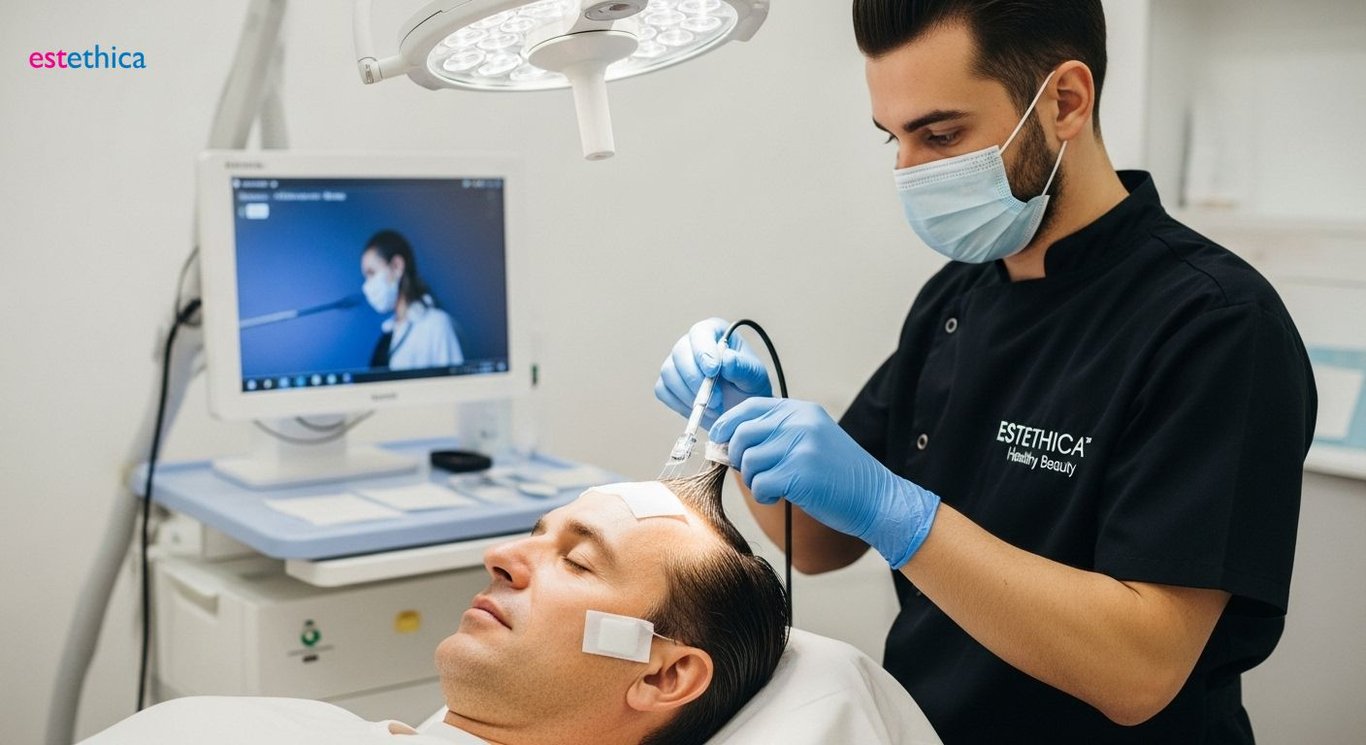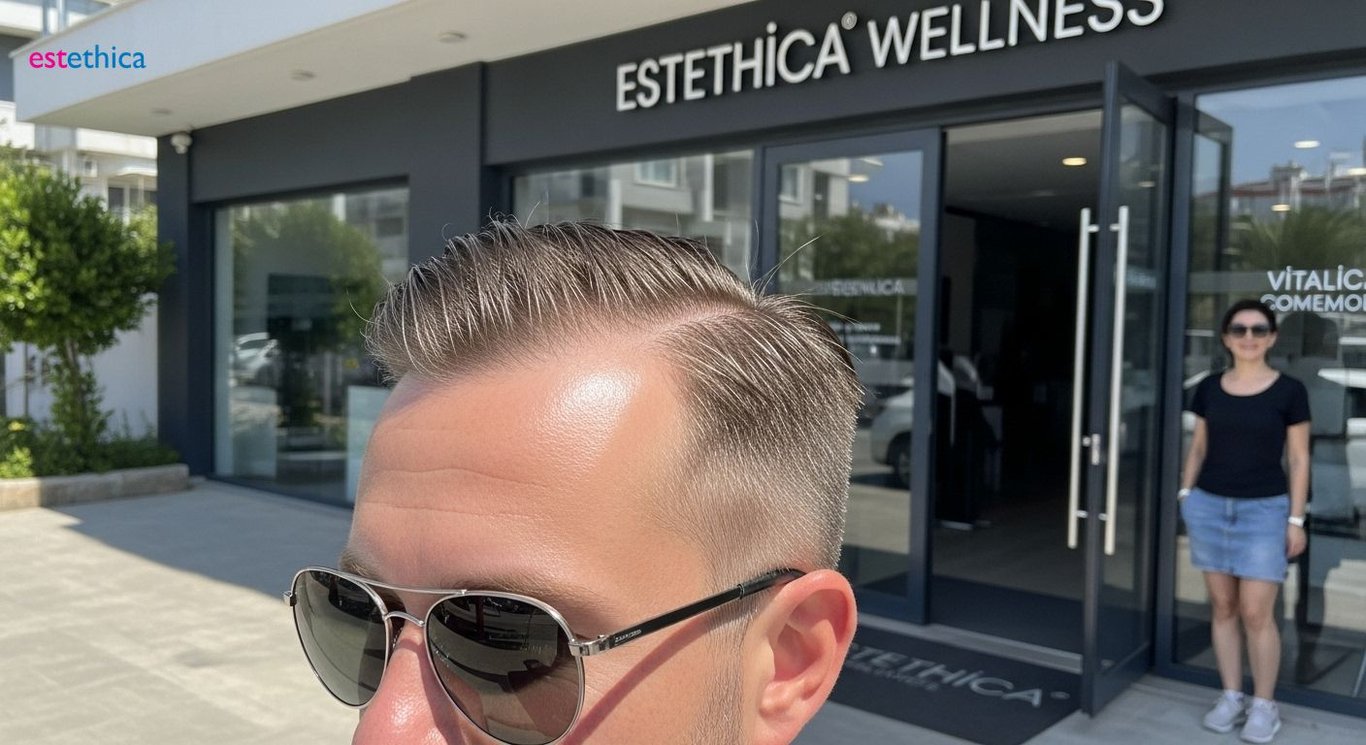Hair Restoration Revolution: New Hope for Hair Loss?
Uncover innovative solutions for hair loss with our insight on FUE hair transplants and alternative treatments. Read more to discover the future of hair restoration.
Hair loss is a common challenge affecting both men and women globally. With advancements in medical technology, solutions such as Follicular Unit Extraction (FUE) and other hair transplant methods offer new hope for those seeking to restore their hair. In this blog, we will explore the root causes of hair loss, discuss the effectiveness and expectations from hair transplants, and look into alternative treatments that could bring a revolution in hair restoration.
Decoding Hair Loss: Understanding the Root Cause
Unraveling the Genetic Component of Hair Loss
Genetic factors are a primary determinant in hair loss, especially in cases of androgenetic alopecia, also known as male or female pattern baldness. This condition affects a large percentage of the population and is characterized by a predictable pattern of hair thinning. According to Painless unshaven hair transplant options should be considered.
- Specific genes inherited from parents can influence the sensitivity of hair follicles to dihydrotestosterone (DHT), a hormone that causes follicles to shrink.
- Family history is a strong indicator; if close relatives have experienced pattern baldness, the likelihood increases significantly.
- Genetic testing can sometimes identify specific gene variants associated with hair loss risk, though this is not yet a routine practice.
Beyond genetics, hormonal imbalances can also trigger hair loss. Conditions like polycystic ovary syndrome (PCOS) or thyroid disorders can disrupt the hair growth cycle. Lifestyle factors such as chronic stress, poor diet, and certain medications can exacerbate hair thinning. Understanding these underlying causes is key to tailoring effective hair restoration strategies.
The Role of Lifestyle and Health in Hair Thinning
Lifestyle choices and overall health significantly affect hair vitality. Nutritional deficiencies, particularly in iron, zinc, and biotin, can lead to hair weakening and increased shedding. Stress, both physical and emotional, can disrupt the hair growth cycle, pushing follicles into a resting phase and causing temporary hair loss. For instance, estethica offers comprehensive consultations to assess these contributing factors.
- Maintaining a balanced diet rich in vitamins and minerals supports healthy hair growth.
- Managing stress through relaxation techniques or professional counseling can prevent stress-related hair loss.
- Avoiding harsh hair treatments and styling practices minimizes mechanical damage to the hair shaft.
Certain medical conditions, such as alopecia areata, an autoimmune disorder, and infections of the scalp, can directly cause hair loss. Seeking professional medical advice for diagnosis and treatment is crucial. Early intervention can often prevent permanent damage and promote hair regrowth, preserving hair density and overall scalp health.

Follicular Unit Extraction (FUE): The Gold Standard?
Benefits of FUE in Modern Hair Restoration
Follicular Unit Extraction (FUE) is celebrated for its precision and patient comfort in hair transplantation. As https://estethica.com.tr highlights, a key advantage of FUE is the minimal scarring, which allows patients to wear shorter hairstyles without visible marks. The procedure involves extracting individual hair follicles from the donor area, typically the back of the scalp, and transplanting them to areas affected by hair loss treatment. This technique reduces trauma to the scalp, leading to quicker healing.
- FUE allows for natural-looking results because follicles are placed individually, mimicking natural hair growth patterns.
- The recovery time is shorter compared to older methods, with most patients returning to normal activities within a week.
- FUE can be used in various hair restoration procedures, including eyebrow and beard transplants, offering versatility.
Furthermore, FUE's precision minimizes damage to surrounding tissues, promoting successful graft survival. This advanced approach ensures a higher density and more uniform coverage, increasing patient satisfaction with the outcome of their hair transplant. estethica emphasizes tailored treatment plans to meet individual needs, optimizing results and patient experiences.
Understanding the FUE Procedure and Ideal Candidates
The FUE procedure begins with a detailed consultation to assess the patient's hair loss pattern and overall health. The donor area is then prepared, and individual follicles are carefully extracted using a specialized micro-punch tool. These follicles are then meticulously implanted into the recipient area, considering the natural angle and density of hair growth. estethica's approach to painless unshaven hair transplant ensures minimal downtime and optimal results.
- Initial Consultation: A comprehensive assessment of hair loss and discussion of treatment goals.
- Follicle Extraction: Individual follicles are extracted with precision tools to minimize scarring.
- Implantation: Follicles are carefully placed in the recipient area to match natural hair growth patterns.
Ideal candidates for FUE are individuals experiencing pattern baldness or thinning hair who desire a minimally invasive solution. Those with sufficient donor hair and realistic expectations tend to achieve the best results. Post-operative care includes gentle washing and avoiding strenuous activities to ensure proper graft survival and promote new hair growth. Regular follow-ups at estethica help monitor progress and address any concerns, ensuring long-term satisfaction.

Is a Hair Transplant Permanent? Setting Realistic Expectations
Maximizing Longevity of Hair Transplants
Achieving a lasting outcome from a hair transplant requires a multifaceted approach. The transplanted hair follicles are typically resistant to DHT, the hormone responsible for hair thinning. However, the longevity of the transplant can be influenced by other factors, such as how well the patient adheres to post-operative care instructions and the natural progression of hair loss in non-transplanted areas. Proper care ensures the grafts integrate successfully and remain healthy over time. estethica provides detailed aftercare guidelines to support this process.
- Following post-operative care instructions carefully ensures optimal graft survival.
- Protecting the scalp from sun exposure reduces potential damage to transplanted follicles.
- Maintaining a healthy lifestyle, including a balanced diet and stress management, supports long-term hair health.
The hair transplant procedure seeks to address hair loss effectively, strategic placement of grafts can create a fuller, more natural-looking head of hair. Regular check-ups at estethica allow for ongoing monitoring and early intervention if needed, ensuring the best possible long-term results. The goal is to provide patients with a restored hairline and renewed confidence.
Factors Influencing the Success of a Hair Transplant
Several factors can impact the overall success and longevity of a hair transplant. The surgeon's expertise in performing the hair transplant is paramount, as precision in follicle extraction and placement is critical for optimal graft survival. The quality and density of the donor area also play a significant role; a healthy donor area provides strong, resilient follicles. Additionally, patient compliance with post-operative care instructions is essential for successful healing and growth. estethica emphasizes a collaborative approach, ensuring patients are well-informed and supported throughout the entire process.
- Surgeon's Skill: Expertise in FUE technique directly impacts graft survival rates.
- Donor Area Health: High-quality follicles from a healthy donor area ensure better long-term results.
- Post-Operative Care: Diligent adherence to care instructions promotes successful healing and growth.
Proper scalp hygiene and protection from excessive sun exposure are vital components of aftercare. These practices help maintain a healthy scalp environment, which is conducive to hair growth. At estethica, customized care plans are designed to address individual needs, ensuring that each patient receives the support necessary for achieving lasting satisfaction with their hair restoration.

Beyond the Scalpel: Exploring Alternative Hair Loss Treatments
Exploring Laser Therapy for Hair Restoration
Laser therapy, particularly low-level laser therapy (LLLT), has emerged as a non-invasive option for stimulating hair growth. This treatment uses specific wavelengths of light to enhance cellular metabolism and increase blood flow to the scalp. Improved circulation delivers more nutrients to hair follicles, revitalizing them and encouraging hair regrowth. Laser therapy is often administered through devices such as laser combs or caps, making it accessible for home use as part of a consistent hair restoration regimen.
- LLLT stimulates hair follicles by increasing ATP production, providing the energy needed for hair growth.
- Laser therapy helps reduce inflammation in the scalp, creating a healthier environment for hair follicles.
- Consistent use of laser therapy can lead to thicker, stronger hair over time by promoting cell regeneration.
While laser therapy is generally safe, it may not be suitable for all types of hair loss treatment. Individuals with certain skin conditions or those taking photosensitive medications should consult with a healthcare professional before starting laser therapy. estethica offers consultations to determine the best treatment approach based on individual needs and conditions, ensuring safe and effective care.
PRP and Mesotherapy: Advanced Non-Surgical Options for Hair Loss
Platelet-Rich Plasma (PRP) and mesotherapy offer advanced non-surgical solutions for combating hair loss treatment. PRP involves extracting a small amount of the patient's blood, processing it to concentrate the platelets, and then injecting the platelet-rich plasma into the scalp. The growth factors in PRP stimulate hair follicles, promoting hair growth and increasing hair density. Mesotherapy, on the other hand, involves injecting a customized blend of vitamins, minerals, and amino acids directly into the scalp to nourish hair follicles and improve their health.
- PRP Therapy: Uses concentrated platelets from the patient's blood to stimulate hair follicle growth.
- Mesotherapy: Delivers essential nutrients directly to the scalp to nourish hair follicles.
- Combined Approach: Some clinics like estethica combine PRP and mesotherapy for enhanced results.
Both PRP and mesotherapy are minimally invasive and typically require multiple sessions for optimal results. These treatments can be particularly effective for individuals experiencing early stages of hair loss or those looking to improve the overall health and appearance of their hair. estethica provides personalized treatment plans combining these therapies to maximize effectiveness and patient satisfaction. These non-surgical options offer hope for those seeking to revitalize their hair without undergoing a hair transplant.
Transform Your Look: The Ultimate Guide to Hair Transplant
Follicular Unit Extraction (FUE) for Minimally Invasive Hair Restoration
estethica specializes in Follicular Unit Extraction (FUE), a minimally invasive hair transplant technique known for its precision and patient comfort. FUE involves extracting individual hair follicles from the donor area and transplanting them to areas affected by hair loss, ensuring natural-looking results and quicker healing.
estethica's surgeons are highly skilled in performing FUE procedures with expertise in follicle extraction and placement, critical for optimal graft survival. The team's deep understanding of hair growth patterns enables them to deliver comprehensive consultations and assess the patient's hair loss pattern and overall health to provide long-term satisfaction.
Comprehensive Aftercare and Scalp Health for Lasting Hair Transplant Success
estethica ensures patient satisfaction through detailed post-operative care and scalp health management. Patients receive clear aftercare guidelines, including gentle washing and avoiding strenuous activities, to promote successful graft survival and new hair growth. Proper scalp hygiene and protection from excessive sun exposure are vital components of the comprehensive support.
estethica’s commitment to achieving lasting outcomes is evident in its comprehensive approach, which includes strategic graft placement and continuous monitoring. By addressing hair loss effectively and providing ongoing monitoring, estethica aims to restore hairlines and renew confidence, ensuring the best possible long-term results.
Frequently Asked Questions
What are the primary causes of hair loss?
What is Follicular Unit Extraction (FUE) and what are its benefits?
How permanent is a hair transplant and what affects its longevity?
What alternative hair loss treatments are available besides surgery?
Who is an ideal candidate for a FUE hair transplant?
Achieve your aesthetic goals with estethica and receive expert guidance from our dedicated team.
📞 Get Your Free Consultation!